In the rapidly evolving blockchain landscape of 2025, NEAR Protocol has emerged as a formidable layer-1 network, captivating developers and users with its scalability, user-friendliness, and focus on mass adoption. With 46 million monthly active users as of May 2025, NEAR ranks as the #2 most-used layer-1 blockchain for user activity, trailing only behind giants like TRON. Its developer-centric design and cutting-edge technology make it a standout in a crowded field. This blog post explores NEAR’s meteoric rise, its technical innovations, thriving ecosystem, and why it’s poised to shape the future of Web3, drawing on recent data and community insights.
NEAR’s Momentum: By the NumbersNEAR Protocol’s usage metrics in 2025 highlight its growing influence:
- User Base: With 46 million monthly active users, NEAR has seen explosive growth, rivaling TRON’s 306 million total accounts and outpacing many competitors in user engagement.
- Transaction Volume: NEAR processes thousands of transactions daily, with its Nightshade sharding enabling high throughput and low latency.
- Scalability Goals: NEAR aims to achieve 1 million transactions per second (TPS), positioning it to compete with Solana’s 65,000 TPS and surpass TRON’s 2,000 TPS and Ethereum’s 15 TPS.
- Transaction Costs: NEAR’s fees are among the lowest, averaging less than $0.01, comparable to Solana’s $0.00025 and TRON’s $0.0001, making it ideal for microtransactions.
- Market Position: NEAR’s native token, NEAR, trades at approximately $5.61 with a $6.2 billion market cap as of July 2025, reflecting strong market confidence.
These figures underscore NEAR’s focus on scalability and accessibility, earning it praise on platforms like X, where users tout its potential to “rival Ethereum” and drive Web3 adoption.
The NEAR Vision: A User-Friendly Web3 Ecosystem
Launched in 2020 by founders Illia Polosukhin and Alexander Skidanov, NEAR Protocol aims to make blockchain accessible to everyone, from developers to end-users. Unlike Ethereum’s complex user experience or Solana’s high hardware demands, NEAR prioritizes simplicity, offering a developer-friendly platform and seamless onboarding for non-crypto natives. Its mission is to bridge the gap between Web2 and Web3, enabling a decentralized internet powered by scalable, low-cost infrastructure.The NEAR token serves multiple purposes:
- Transaction Fees: NEAR covers gas fees, keeping costs minimal.
- Staking and Governance: Users stake NEAR to secure the network and participate in governance decisions.
- Ecosystem Access: NEAR powers dApps across gaming, DeFi, and social platforms, fostering a vibrant ecosystem.
Technical Strengths: Scalability and Simplicity
NEAR’s architecture is built for speed, scale, and ease of use, leveraging several innovative features:
- Nightshade Sharding:
- NEAR’s Nightshade sharding model splits the blockchain into smaller segments (shards), allowing parallel transaction processing. This boosts throughput and reduces congestion, unlike Ethereum’s sequential processing or TRON’s delegated model.
- While Solana’s Proof of History (PoH) achieves 65,000 TPS, NEAR’s sharding roadmap targets 1 million TPS, making it a future-proof contender.
- Developer-Friendly Tools:
- NEAR supports Rust and AssemblyScript, simplifying smart contract development compared to Ethereum’s Solidity. Its Account Abstraction allows users to interact with the blockchain using familiar Web2 interfaces, like email logins.
- This contrasts with Solana’s steeper learning curve and TRON’s Ethereum-compatible but less flexible TRON Virtual Machine (TVM).
- Low-Cost Transactions:
- NEAR’s fees, averaging under $0.01, make it competitive with TRON and Solana, enabling cost-effective dApps for gaming, DeFi, and social applications.
- For example, developers can deploy dApps without worrying about prohibitive gas fees, unlike Ethereum’s base layer.
- Dynamic Resharding:
- NEAR’s ability to dynamically adjust shards based on network demand ensures consistent performance, even during peak usage. This sets it apart from blockchains like BNB Chain, which rely on fixed validator sets.
Impact: These features make NEAR a scalable, developer-friendly platform, attracting projects seeking high performance and low costs without sacrificing user experience.
Ecosystem Growth: Driving Web3 Adoption
NEAR’s ecosystem in 2025 is flourishing, with a focus on practical applications that resonate with users and developers:
- DeFi and Financial Inclusion:
- NEAR hosts DeFi protocols like Burrow and Orderly Network, offering lending, trading, and liquidity solutions. While its $1.5 billion TVL trails Ethereum’s $64.5 billion, NEAR’s low fees attract cost-conscious users.
- Its focus on emerging markets mirrors TRON’s strategy, with partnerships enabling microfinance and cross-border payments.
- Gaming and Social Platforms:
- NEAR powers blockchain-based games and social dApps, leveraging its fast confirmation times (under 1 second) to deliver seamless experiences. Projects like Sweat Economy integrate fitness with Web3 rewards, driving user engagement.
- Unlike Solana’s gaming-heavy ecosystem, NEAR emphasizes accessibility, making it easier for non-crypto users to participate.
- NFTs and Creator Economy:
- NEAR’s NFT ecosystem, including platforms like Mintbase, supports artists and creators with low-cost minting and trading. While smaller than Ethereum or Solana’s NFT markets, NEAR’s user-friendly approach is gaining traction.
- Its Web3 social platforms, like NEAR Social, enable decentralized communities, competing with TRON’s content-sharing focus.
- Developer Ecosystem:
- NEAR’s Blockchain Operating System (BOS) allows developers to build frontends that integrate with any blockchain, enhancing interoperability. This has attracted over 25,000 developers, per 2025 reports, rivaling Ethereum’s developer community.
- Initiatives like the NEAR Foundation’s grants incentivize innovation, fostering a growing dApp ecosystem.
Recent Developments: In 2025, NEAR rolled out upgrades to its Nightshade 2.0 sharding, boosting throughput and reducing latency. Its AI integration, including tools for decentralized AI applications, positions NEAR at the forefront of emerging Web3 trends, as highlighted in X posts.
Community and Sentiment
The NEAR community is vibrant, with developers and users praising its accessibility and scalability. X posts describe NEAR as “the future of Web3,” emphasizing its user growth and developer tools. The NEAR Foundation actively engages with the community, hosting hackathons and funding projects to drive adoption. Sentiment reflects optimism about NEAR’s potential to challenge Ethereum and Solana, with one user noting, “46M monthly users and counting—NEAR’s onboarding game is unmatched.”
Challenges and Trade-Offs
Despite its strengths, NEAR faces challenges:
- Ecosystem Maturity: NEAR’s ecosystem, while growing, is less mature than Ethereum’s DeFi dominance or TRON’s stablecoin volume ($80 billion). It must scale its dApp offerings to compete.
- Competition: Solana’s 65,000 TPS and TRON’s 306 million users set a high bar. NEAR’s 1M TPS goal is ambitious but not yet realized.
- Brand Recognition: NEAR lacks the mainstream visibility of Ethereum or TRON, requiring more marketing to attract users and developers.
- Centralization Risks: While NEAR’s sharding is decentralized, its validator requirements are higher than Ethereum’s, potentially limiting node diversity compared to its 1 million validators.
NEAR vs. Competitors
- Ethereum: Ethereum’s $64.5 billion TVL and developer ecosystem dwarf NEAR’s, but its high fees and slower base-layer speeds (15 TPS) make NEAR a more user-friendly alternative.
- Solana: Solana’s 65,000 TPS and gaming focus outpace NEAR’s current throughput, but NEAR’s sharding and developer tools offer a more accessible onboarding experience.
- TRON: TRON’s 306 million users and $80 billion in stablecoin volume dominate, but NEAR’s sharding and AI integration position it for future growth.
- BNB Chain: BNB Chain’s 200 TPS and Binance-backed ecosystem are strong, but NEAR’s scalability and Web3 focus give it an edge for next-gen applications.
The Future of NEAR
NEAR is well-positioned for growth in 2025 and beyond:
- Scalability Upgrades: Achieving 1M TPS through Nightshade 2.0 will cement NEAR’s leadership in high-throughput blockchains.
- AI and Web3 Integration: NEAR’s focus on decentralized AI applications aligns with 2025’s tech trends, attracting developers in emerging fields.
- User Onboarding: Tools like Account Abstraction and BOS will continue to lower barriers, driving adoption in gaming, DeFi, and social platforms.
- Global Expansion: Partnerships in emerging markets and developer grants will expand NEAR’s reach, mirroring TRON’s success in Asia and Latin America.
For developers, NEAR offers a scalable, low-cost platform with intuitive tools. For users, its seamless experience makes Web3 accessible. For investors, NEAR’s growth potential is compelling, though volatility and competition warrant caution.
NEAR’s Path to Web3 Leadership
In 2025, NEAR Protocol stands out as a rising star, driven by its 46 million monthly active users, Nightshade sharding, and developer-friendly ecosystem. Its focus on scalability, low fees, and user accessibility positions it to challenge established players like Ethereum, Solana, and TRON. While its ecosystem is still maturing, NEAR’s technical innovations and Web3 vision make it a powerhouse for decentralized applications, from DeFi to gaming and AI.
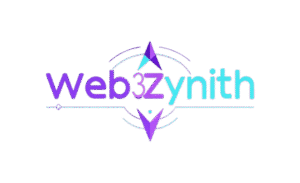



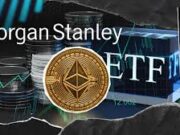
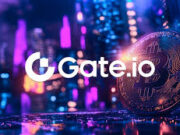

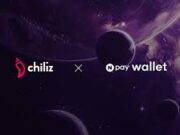
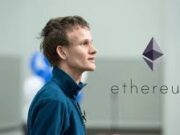


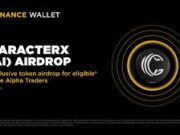
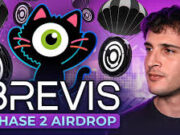
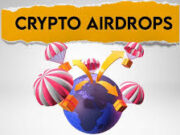
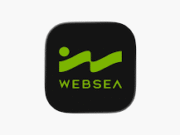
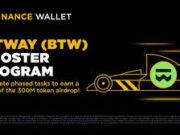


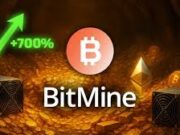


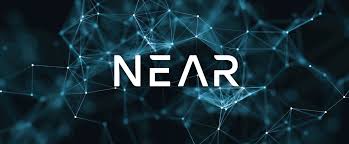

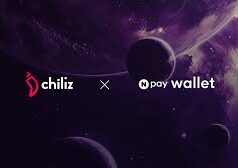
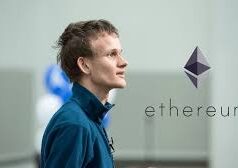



I’m not sold on NEAR being a “rising star.” It’s been around long enough to have done something
Nightshade splits the blockchain to handle more transactions, making it super scalable. The focus on easy onboarding for devs and users was a great explainer. Thanks for breaking it down!
Near has always been user friendly. Your address can be just 5 word ending with .near. Not long winded ones like EVMs
They’re working on AI-driven smart contracts for DeFi automation in 2025, which is huge
A comparison with other chains post would be super helpful for newbies like me. Here from twitter. Thanks
Great take on NEAR’s dev-friendly tools—makes building dApps sound so easy!